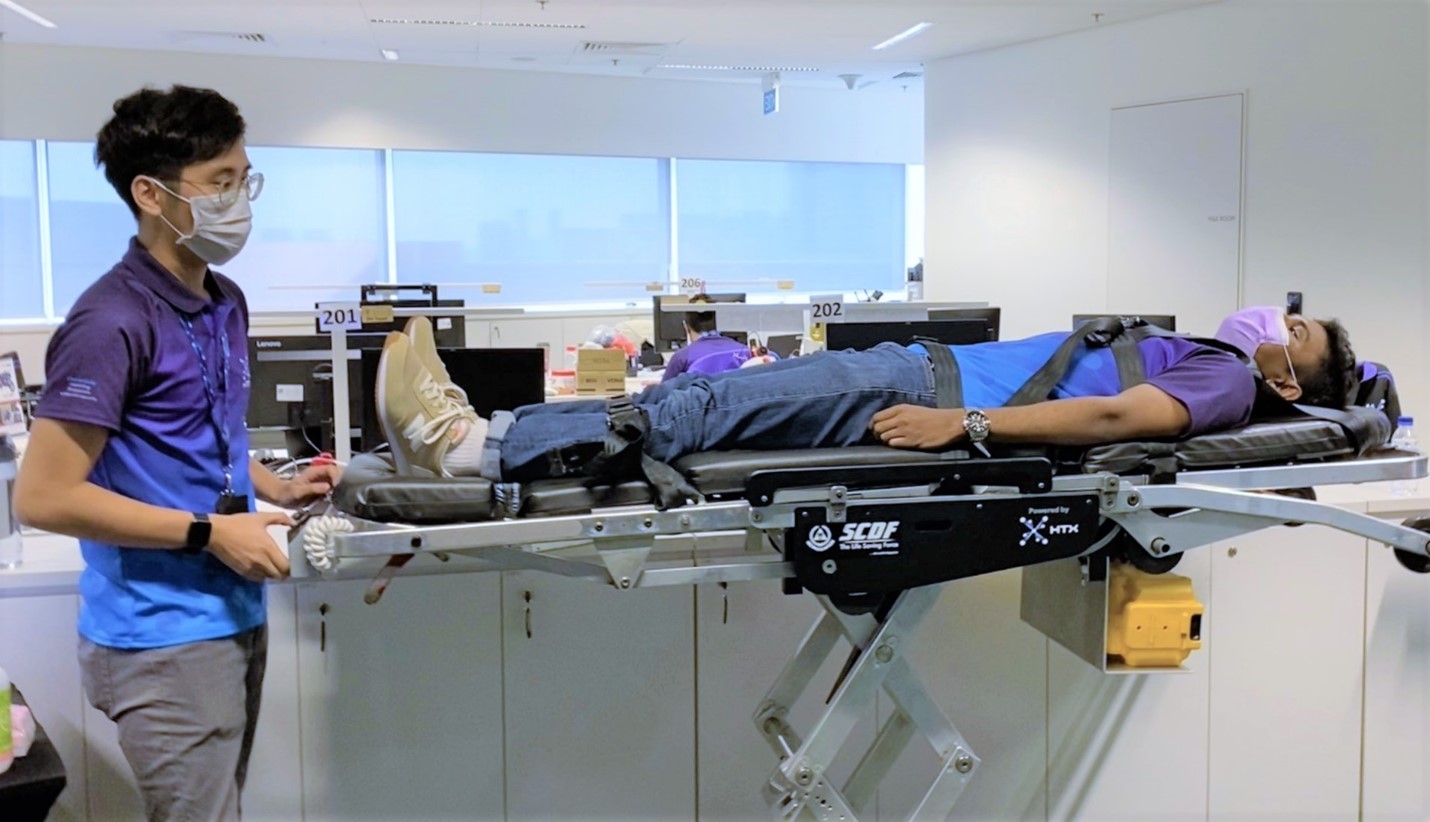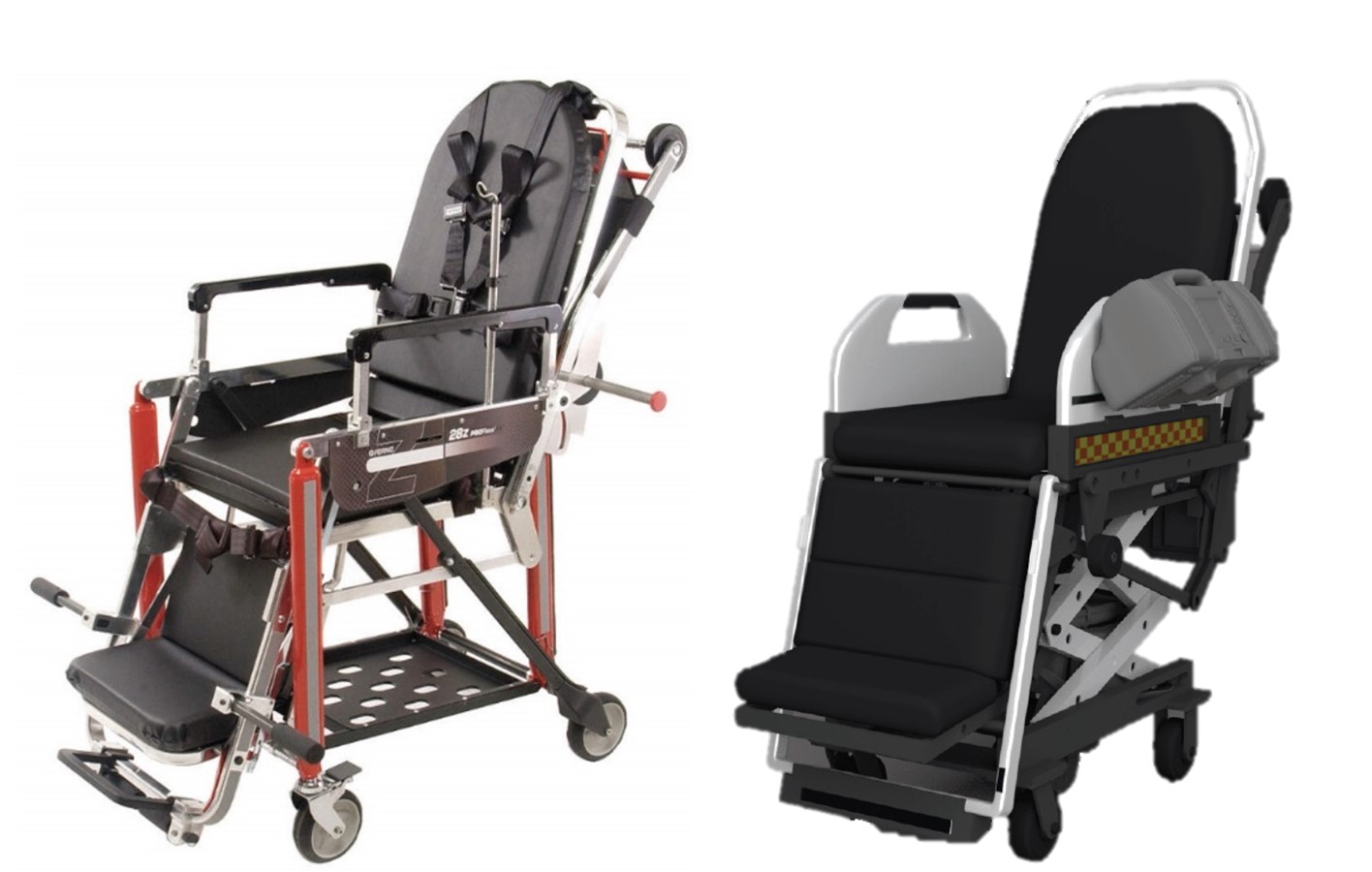 (Photo: HTX)
(Photo: HTX)
“3..2..1!”
That’s the common refrain that the three Singapore Civil Defence Force’s Emergency Medical Services (SCDF EMS) officers use when they coordinate to lift their patient onto the stretcher, and onto the ambulance.
No matter the emergency, the three EMS officers deployed in each ambulance constantly push themselves to ensure that patients are well-supported at every point of their journey to the hospital.
But unknown to many, EMS officers are at risk of fatigue and service injuries, especially during the lifting of the patient and the stretcher onto the ambulance. As they have to exert tremendous physical effort to support the weight of the patient and the current 30kg stretcher, it’s not uncommon for the three-men EMS crew to sustain back and neck strains after prolonged operations. This may result in injuries when accumulated over years of service.
Worse, these physical stressors are compounded with an increasing number of emergency calls to SCDF. According to SCDF’s annual reports, the number of emergency incidents have been rising steadily within the past 5 years.
“We are facing more and more calls compared to previous years. With Singapore’s ageing population increasing, there is an increase in medical emergencies – especially among the elderly. Because of the high call load, it causes fatigue on our EMS crew,” said CPT Joey Low, EMS Ops Officer, SCDF.
“With the manpower limitations, we needed to find a way to make our stretcher work harder for us,” she added.
Thus, to help the EMS ground operations crew work more safely amid the high call load, HTX’s engineers have developed a prototype motorised stretcher with inputs from EMS ground officers like CPT Low. As its strong mechanism can assist the EMS crew when lifting and loading the patient, the motorised stretcher will only need one operator, instead of three currently.
“We developed the motorised stretcher with SCDF in mind – to improve operational efficiency by reducing the amount of labour and time required by EMS personnel to convey a patient to the ambulance,” said Robotics, Automation and Unmanned Systems (RAUS) CoE’s Head of Ground Systems Dr Daniel Teo.
“Combining our technical expertise with SCDF’s operational experience, the motorised stretcher is designed to be easy to deploy and nimble to suit the local terrain; all of which, collectively, will enhance the conveyance experience for both
the patient and the operator.”
 Current SCDF manual stretcher (left) and the new motorised stretcher (right) (Photo: HTX)
Current SCDF manual stretcher (left) and the new motorised stretcher (right) (Photo: HTX)
Current Challenges
Presently, there are some areas for improvement for the manual stretchers that are currently used.
Apart from the EMS crew possibly sustaining injuries from loading patients, the current stretcher has a fixed height. This makes it challenging to transfer incapacitated patients onto the stretcher across different height levels, such as from a bed to the stretcher.
Singapore’s narrow corridors also limited the design of the stretcher to a cot-to-chair configuration, and there were no motorised solutions in the market that could be procured for SCDF’s needs.
Development
Our engineers took these concerns and decided to base their designs on the current stretchers that SCDF uses. The team spent months researching, discussing, and designing the stretcher to ensure that the motorised stretcher would benefit the EMS crew and significantly enhance their operational efficiency.
“During the initial phase of development, our prototype of the motorised stretcher tended to tilt to the side where most of the heavy load was concentrated at, resulting in a twisting of its legs. As a result, the initial prototype was unstable and could potentially overturn,” said Kong Shao Wei, one of the developmental engineers.
But the team put their heads together to find a solution and pushed themselves to ensure that the functionality of the stretcher was both safe and effective.
“While developing a working prototype within four months was challenging, it made the fruits of our labour much sweeter when we witnessed our most recent prototype being able to transport a dummy patient for the first time. To be able to play a part in the design of a crucial equipment that can save lives was certainly a proud moment for the team,” he added.
The prototype motorised stretcher will undergo further development and enhancements in different phases with SCDF in the coming months. These enhancements would transform SCDF’s existing manual stretcher into an automated unit that can address current concerns and better aid the EMS crew in their duties.
The people involved in this project are:
- Director of RAUS, Cheng Wee Kiang
- RAUS Head of Ground Systems, Dr Daniel Teo Tat Joo
- RAUS Engineer, Kong Shao Wei
- RAUS Intern, Suriya Varshan
Key Features
You can view the key features of the motorised stretcher in the video below.
As the project is still ongoing, HTX will continue to collaborate with SCDF to improve upon the prototype so that it can eventually be implemented in actual operations.
“The safety and well-being of our EMS personnel have a direct impact on the quality of EMS we provide to the public. It is crucial to keep pace with the public’s increasing demand for EMS and the evolving operational terrain. The new motorised stretcher will allow our personnel to work more efficiently and safely amidst such challenges,” said SCDF’s Director of Emergency Medical Services Assistant Commissioner Yong Meng Wah.
The Motorised Stretcher was also covered in the Straits Times on 17 Jun 2021.
SCDF to trial motorised stretcher that needs only one operator to load, unload patients.

